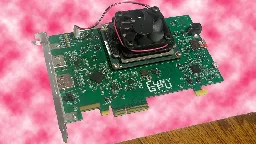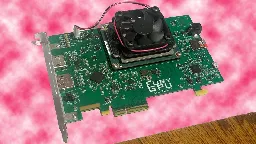New open source GPU is free to all — FuryGPU runs Quake at 60fps, supports modern Windows software
New open source GPU is free to all — FuryGPU runs Quake at 60fps, supports modern Windows software

www.tomshardware.com
New open source GPU is free to all — FuryGPU runs Quake at 60fps, supports modern Windows software



